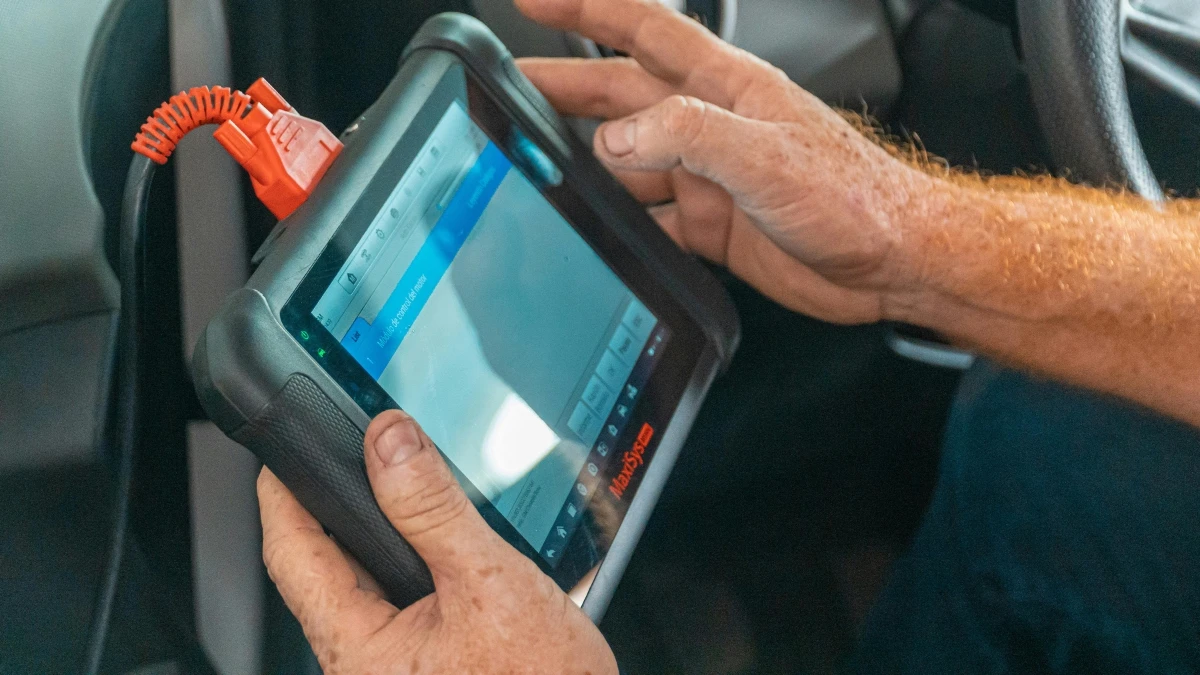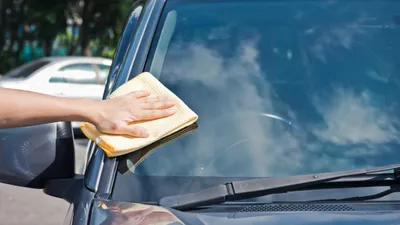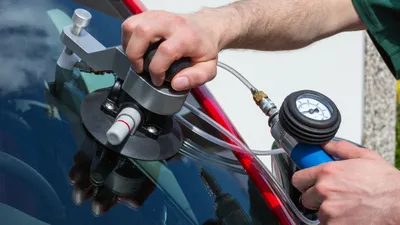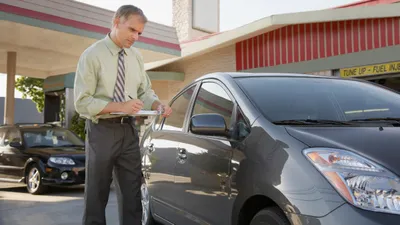ADAS Calibration: Why It's Critical After Windshield Replacement
Mike Johnson
Lead Technician

Introduction
Modern vehicles are becoming increasingly sophisticated, with a range of safety systems that rely on precise calibration to function correctly. Advanced Driver Assistance Systems (ADAS) represent a significant leap forward in vehicle safety technology, using cameras, sensors, and radar systems to monitor road conditions and assist drivers.
Many of these ADAS sensors and cameras are mounted on or behind the windshield, making proper calibration after windshield replacement absolutely critical for these safety systems to function as designed. This article explains why ADAS calibration is necessary, the different types of calibration procedures, and why you should never skip this essential step after windshield replacement.
What is ADAS?
Advanced Driver Assistance Systems (ADAS) are electronic systems that help drivers with both driving and parking functions. These systems use automated technology, such as sensors and cameras, to detect nearby obstacles, road markings, traffic signs, and other critical information.
Common ADAS Features
Modern vehicles may include some or all of the following ADAS technologies:
- Forward Collision Warning (FCW) - Alerts drivers of an impending collision with a vehicle ahead
- Automatic Emergency Braking (AEB) - Applies the brakes to prevent or mitigate a collision
- Lane Departure Warning (LDW) - Alerts drivers when the vehicle begins to move out of its lane
- Lane Keeping Assist (LKA) - Automatically steers a vehicle back into its lane
- Adaptive Cruise Control (ACC) - Maintains a set speed and distance from the vehicle ahead
- Blind Spot Detection - Alerts drivers to vehicles in their blind spots
- Pedestrian Detection - Identifies pedestrians and cyclists in the vehicle's path
- Traffic Sign Recognition - Identifies and displays road signs
Windshield-Mounted Components
Many ADAS components are mounted on or behind the windshield, including:
- Forward-facing cameras for lane departure warning and automatic emergency braking
- Rain sensors that activate windshield wipers
- Infrared cameras for night vision systems
- Light sensors for automatic headlights
When a windshield is replaced, these components must be removed and reinstalled, disrupting their precise positioning and requiring recalibration.
Why Calibration is Necessary
ADAS calibration is necessary after windshield replacement for several critical reasons:
Precise Positioning Requirements
ADAS cameras and sensors require extremely precise positioning to function properly. Even a slight misalignment of just a few millimeters or a single degree can cause significant errors in how these systems interpret road conditions and obstacles, especially at highway speeds or long distances.
Changed Windshield Characteristics
Different windshields, even those made to OEM specifications, may have slight variations in glass curvature, thickness, or optical clarity. These seemingly minor differences can affect how forward-facing cameras "see" through the glass, necessitating recalibration.
Manufacturer Requirements
Vehicle manufacturers specifically require ADAS calibration after windshield replacement. Skipping this step may void warranties and could create liability issues in the event of an accident involving ADAS systems.
Ensuring Safety System Functionality
Without proper calibration, safety systems may:
- Fail to detect obstacles or hazards in the road
- Trigger false warnings or unnecessary emergency braking
- Fail to maintain proper lane positioning
- Misread traffic signs or signals
In essence, uncalibrated ADAS systems can go from being safety features to potential safety hazards.
Types of ADAS Calibration
There are two primary methods for ADAS calibration after windshield replacement:
Static Calibration
Static calibration is performed in a controlled environment, typically a service center or specialized facility. The process requires:
- A large, level floor space with specific lighting conditions
- Special calibration targets or patterns placed at precise distances and angles from the vehicle
- Specialized diagnostic equipment connected to the vehicle's computer system
- Technicians specifically trained in the procedure
Static calibration is typically more comprehensive and can calibrate multiple systems simultaneously. The vehicle remains stationary throughout the process, which typically takes 1-3 hours depending on the vehicle and systems involved.
Dynamic Calibration
Dynamic calibration requires driving the vehicle under specific conditions:
- Driving at controlled speeds (typically 45-55 mph)
- Clear road markings and good weather conditions
- Specific driving patterns and distances (often 5-15 miles)
- Diagnostic equipment monitoring the calibration progress
Dynamic calibration allows the vehicle's systems to self-calibrate by observing actual road conditions. It's sometimes used in conjunction with static calibration for certain systems.
Manufacturer-Specific Requirements
Calibration requirements vary significantly by vehicle manufacturer, model, year, and the specific ADAS features installed. Some vehicles require static calibration, others need dynamic calibration, and many need a combination of both.
For example:
- Honda and Acura typically require static calibration of their LaneWatch and forward camera systems
- Toyota often requires both static and dynamic calibration for their Safety Sense systems
- Subaru's EyeSight system typically requires static calibration
- Tesla vehicles generally use dynamic self-calibration after windshield replacement
Professional auto glass technicians maintain databases and tooling for each manufacturer's specific requirements.
Risks of Skipping Calibration
The consequences of neglecting ADAS calibration after windshield replacement can be severe:
Safety Hazards
Uncalibrated systems may malfunction in critical situations:
- Automatic emergency braking might activate too late or not at all
- Lane keeping assistance could steer the vehicle incorrectly
- Pedestrian detection might fail to identify people in the vehicle's path
- Adaptive cruise control could maintain unsafe distances from vehicles ahead
These malfunctions can lead to accidents that the systems were specifically designed to prevent.
False Alerts and Driver Distraction
Miscalibrated systems often generate false alerts and warnings, which can be more than just an annoyance. Frequent false alarms can lead to "alert fatigue," causing drivers to ignore or disable safety systems entirely.
Legal and Insurance Implications
Skipping required calibration may:
- Void vehicle warranties for related systems
- Create liability issues in case of accidents
- Potentially affect insurance coverage if systems are not maintained according to manufacturer specifications
- Lead to failed vehicle inspections in some jurisdictions
Vehicle Performance Issues
Beyond safety concerns, uncalibrated ADAS systems can cause operational problems:
- Warning lights on the dashboard
- Systems that deactivate or enter failsafe mode
- Reduced functionality of related vehicle systems
- Errors stored in the vehicle's computer that may affect other systems
Finding Qualified Technicians
Not all auto glass facilities are properly equipped to perform ADAS calibration after windshield replacement. Here's what to look for when choosing a service provider:
Proper Equipment and Facilities
ADAS calibration requires substantial investment in specialized equipment and facilities:
- Manufacturer-approved diagnostic systems and software
- Calibration targets specific to various vehicle makes and models
- Level floor space with controlled lighting conditions
- Precision measuring tools to ensure exact target placement
Ask potential service providers about their calibration equipment and whether they can perform calibrations in-house or need to outsource them.
Technician Training and Certification
Proper ADAS calibration requires specific training:
- Look for technicians certified by the Auto Glass Safety Council (AGSC)
- Ask about manufacturer-specific training for your vehicle make
- Inquire about how frequently technicians receive updated training
The technology evolves rapidly, so ongoing education is essential for technicians to stay current.
Documentation and Verification
After calibration is complete, you should receive:
- Documentation of the calibration procedure performed
- Confirmation that calibration was successful
- Information about which systems were calibrated
- A warranty covering both the windshield installation and calibration work
This documentation is important for your records and may be needed for insurance or warranty purposes.
Questions to Ask Your Provider
Before scheduling service, ask these questions:
- "Do you perform ADAS calibrations in-house or outsource them?"
- "What type of calibration does my specific vehicle require?"
- "How long will the calibration process take?"
- "Is calibration included in your windshield replacement quote?"
- "Do you provide documentation of successful calibration?"
- "What happens if calibration is unsuccessful?"
Conclusion
ADAS calibration is not an optional service or an upsell—it's a critical safety procedure required by vehicle manufacturers after windshield replacement. The precise alignment of ADAS cameras and sensors is essential for these advanced safety systems to function as designed.
While proper calibration adds time and cost to windshield replacement, it's an investment in your safety and that of others on the road. The risks of skipping this crucial step far outweigh any short-term savings. Always ensure that your auto glass service provider is properly equipped and qualified to perform the specific calibration requirements for your vehicle.
At Clearview Autoglass, we maintain the latest calibration equipment and our technicians receive regular training on evolving ADAS technologies. We provide comprehensive windshield replacement services with proper calibration for all vehicle makes and models, ensuring your safety systems work exactly as designed.
About the Author
Mike Johnson
Lead Technician at Clearview Autoglass with over 15 years of experience in the auto glass industry. Certified by the Auto Glass Safety Council and specialized in ADAS calibration techniques.
Mike shares his expertise through our blog, training sessions, and industry conferences, helping customers understand the importance of proper auto glass care and maintenance.
Related Articles
Need Windshield Replacement with Proper ADAS Calibration?
Our certified technicians are equipped with the latest calibration technology to ensure your vehicle's safety systems function properly after windshield replacement.


